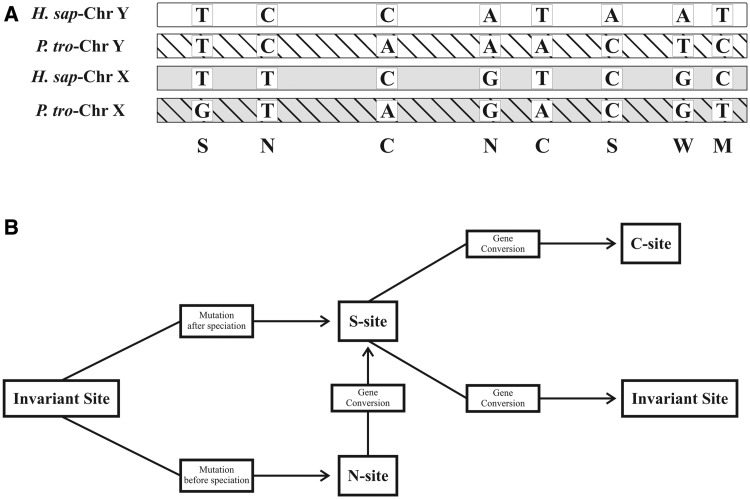Fig. 1.
(A) Possible variant sites within a four-way alignment of the orthologous and gametologous sequences from human and chimpanzee sex chromosomes. Different types of sites are shown: C, C-site or conversion site; N, N-site or nonconversion site; S, S-site (or Singleton); M, multiple mutation site; W, other complex site. Invariant sites are not shown. Classification according to Kijima and Innan (2010). (B) Different molecular mechanisms for the formation of variable sites. A type-S site may arise if a mutation occurs in one sex chromosome after human–chimpanzee speciation, whereas an N-site may be generated by a mutation occurring before speciation. If a gene conversion event involves a type-N nucleotide, it generates an S-site, whereas a conversion of an S-site may generate a C-nucleotide or an invariant site depending on the direction of conversion. M- and W-sites may arise only with multiple mutational events.

